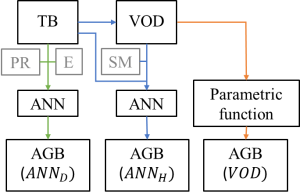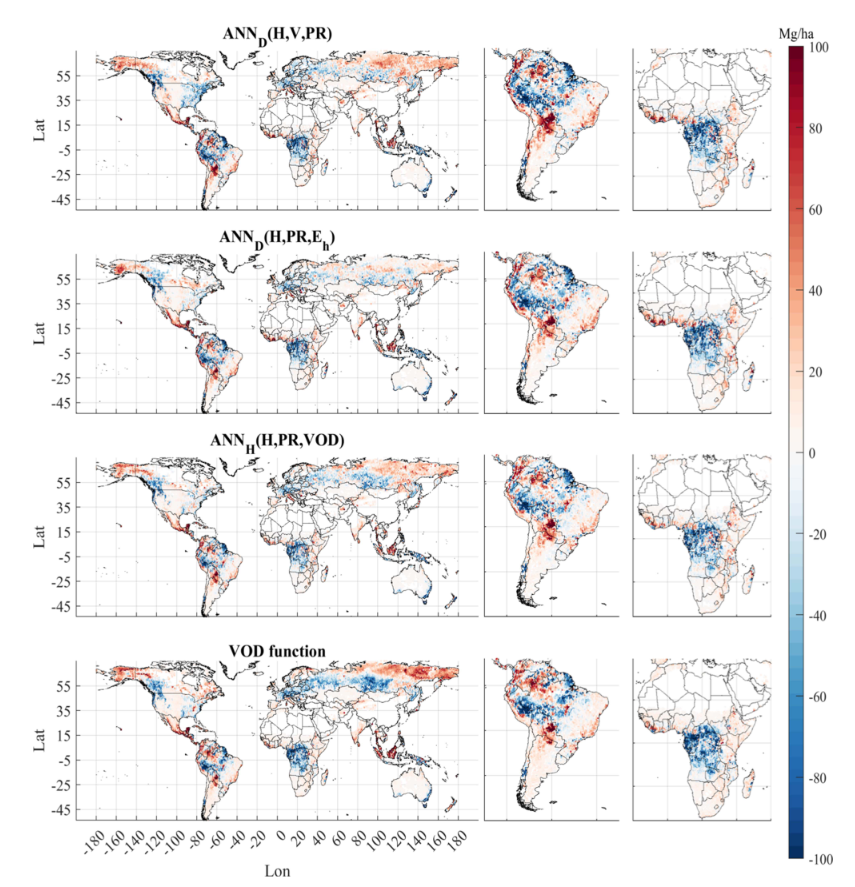Monitoring above-ground biomass (AGB) on Earth is essential to track the evolution of carbon stocks, and the use of satellites makes it possible to produce data with global coverage. Traditionally, optical and synthetic aperture radar observations have been used, providing high spatial resolution (~1km) but not a high temporal sampling. However, in recent years, passive microwave observations – especially at low frequencies such as L-band (1.4 GHz) – have emerged as a promising alternative. Indeed, these signals can penetrate deeper into the vegetation. They allow to compute low spatial resolution maps (~40 km), but they give access to the temporal evolution over the last 14 years.
In the case of SMOS, the first L-band satellite, a new method of above-ground biomass retrieval using neural networks has recently been validated, opening up new prospects for passive microwave observations.
The usual way to estimate AGB from passive microwave observations relies on the Vegetation Optical Depth (VOD) measurements, which represent the attenuation of Earth’s signal through the vegetation. Using a reference AGB map, it is possible to establish a parametric function that can later serve to produce AGB maps from VOD. However, this method does not take advantage of all the information content from SMOS multi-polarization and multi-angular observations.
In a recent paper, in the context of César Salazar-Neira PhD thesis at CESBIO, a new method has been proposed. As explained in the flow diagram, an Artificial Neural Network (ANN) has been used to find a direct relationship from SMOS brightness temperatures to AGB, avoiding the intermediate step of estimating VOD. Several configuration are explored in the paper, such as their advantages with respect to other methods.

Sketch of different approaches to calculate above ground biomass: several parametrisations of ANN have been tested and compared with a parametric function from VOD data.
TB, VOD and AGB respectively represent the Temperature of Brightness, the Vegetation Optical Depth and the Above-ground biomass.

Spatial distribution of Above-Ground Biomass residuals (in red: overestimation; in blue: underestimation) with respect to a reference map (CCI 2018)
César Salazar-Neira, Nemesio Rodriguez-Fernandez, Arnaud Mialon et al.
https://hal.science/hal-04194859/document
